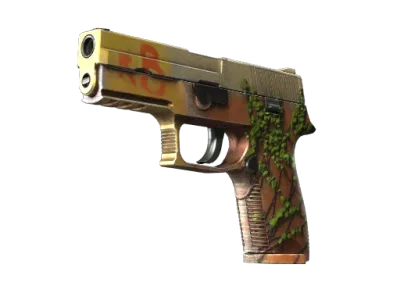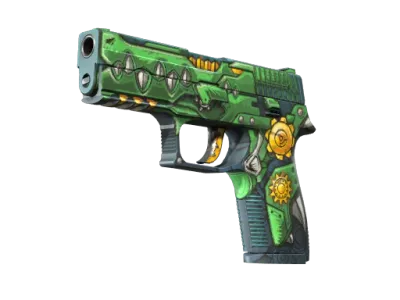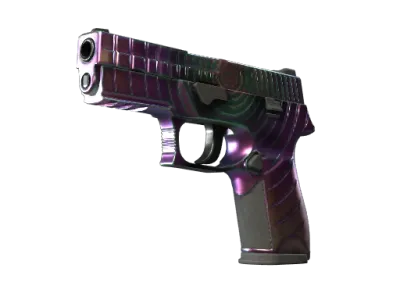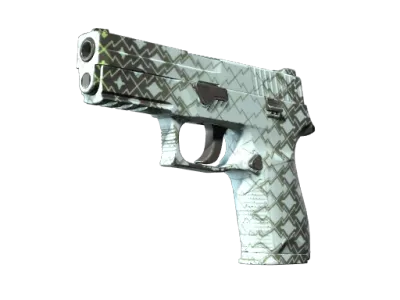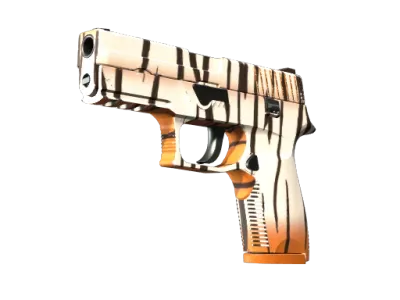Farben
Behälter
Sammlungen
Preisstatistiken
Letzte 7 Tage
Aktueller Preis
7 Tägliche Preisänderung
7 Tagestief
7 Tageshöchstwert
30 Tagestief
30 Tageshöchstwert
90 Tagestief
90 Tageshöchstwert
Allzeittief
Allzeithoch
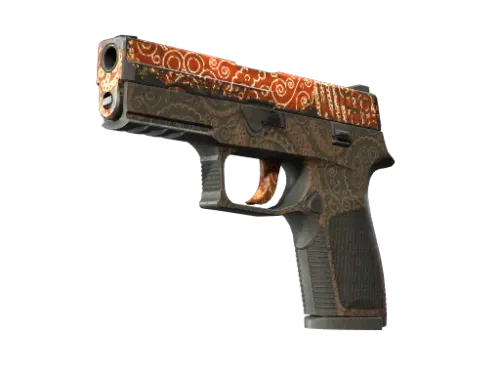
StatTrak™ P250 | Mehndi (Kampfspuren)

Von letzter Woche
-13.77%Vom letzten Monat
-13.57%Aktive Angebote
Farben
Preisstatistiken
Letzte 7 Tage
Aktueller Preis
7 Tägliche Preisänderung
7 Tagestief
7 Tageshöchstwert
30 Tagestief
30 Tageshöchstwert
90 Tagestief
90 Tageshöchstwert
Allzeittief
Allzeithoch
Behälter
Sammlungen
Ähnliche Skins
Beschreibung
Übersicht
Das StatTrak™ P250 | Mehndi ist eine atemberaubende Skin, die aufwendige Mehndi-Designs in den Farben Orange, Gold und Grün zeigt. Es gehört zur The Huntsman Collection und wurde im Mai 2014 veröffentlicht.
Seltenheit
Als 'Classified' in Bezug auf Seltenheit eingestuft, hat die Mehndi-Skin eine relativ niedrige Dropchance. Zusammen mit ihrem schönen Design ist es eine begehrte Skin unter CS:GO-Spielern.
Geschichte
Die P250 | Mehndi wurde 2014 in The Huntsman Weapon Case ins Spiel eingeführt und ist seitdem ein klassischer Favorit in der Community.
Beliebtheit
Aufgrund ihres attraktiven traditionellen Designs, inspiriert von Henna-Körperkunst, bleibt die P250 | Mehndi eine beliebte Wahl unter CS:GO-Spielern.
Kompatibilität
Diese Skin kann nur auf der P250-Pistole ausgestattet werden.
Einzigartige Merkmale
Das einzigartige Merkmal der Mehndi-Skin ist ihr detailliertes Design, das indischen und pakistanischen Mehndi-Mustern nachempfunden ist und der Waffe des Spielers einen exotischen Touch verleiht.
Ereignis
Diese Skin wurde als Teil des Updates veröffentlicht, das The Huntsman Weapon Case einführte.
Trivia
Die P250 | Mehndi war einer der ersten Waffenskins in CS:GO, die traditionelle kulturelle Ästhetik einbezogen und viele andere ethnisch inspirierte Skindesigns inspiriert haben.
Skin-Designer
Entworfen von Valve.
Technische Merkmale
Das Design fängt erfolgreich das filigrane Kunstwerk ein, das typisch für Mehndi-Muster ist, indem es komplexe Schichten und Gradienteffekte verwendet, um den Effekt von Henna auf der Haut nachzuahmen.
Bewertungen und Bewertungen
Die Mehndi-Skin wird in der CS:GO-Community mit positiven Bewertungen angenommen, aufgrund ihrer Darstellung traditioneller Henna-Kunst und des hellen Farbschemas.
Historische Bedeutung
Als eines der frühen Skins, das kulturelle Kunst in CS:GO einführte, hat P250 | Mehndi einen bedeutenden Platz in der Geschichte des CS:GO-Skindesigns.
Gründe für die Beliebtheit
Ihre Beliebtheit wird auf ihre auffällige Ästhetik, Seltenheit und die Tatsache, dass sie einen Teil der südasiatischen Kultur repräsentiert, zurückgeführt, was Spieler aus dieser Region anspricht.
Einflussreiche Ereignisse
Die Einführung von The Huntsman Weapon Case markierte die Einführung kulturell vielfältiger Skins in CS:GO wie P250 | Mehndi.
Entstehungsgeschichte
Die Schaffung von P250 | Mehndi war ein gewagter Schritt, um traditionelle Kunstformen ins Spiel zu integrieren und die Kluft zwischen traditioneller Kunst und modernem Gaming zu überbrücken.
Symbolik und Designelemente
Das Mehndi-Design auf der P250 symbolisiert Freude, Schönheit, spirituelles Erwachen und Angebot, die dieselben Empfindungen darstellen, die mit Mehndi in seiner traditionellen Form verbunden sind.
Emotionale Verbindung
Für Spieler aus Regionen, in denen Mehndi-Kunst ein integraler Bestandteil ihrer Kultur ist, kann dieser Skin eine besondere emotionale Verbindung haben und als Erinnerung an ihr kulturelles Erbe dienen.
Auswirkungen auf die Community
Der Erfolg von P250 | Mehndi hat die Erforschung verschiedener kultureller Themen in Skindesigns angeregt und zu einer detaillierten Erforschung zahlreicher verschiedener traditioneller Kunstformen in CS:GO ermutigt.
Verwendung in Esports
P250 | Mehndi sieht man häufig bei Esports-Events, beliebt aufgrund seines einzigartigen Designs und der lebendigen Farben.
Spielergeschichten
Zahlreiche Spieler aus Südasien berichteten von einem Gefühl der Rückkehr durch das Mehndi-Skin, da es sie an die Henna-Muster erinnert, die sie bei kulturellen Veranstaltungen im echten Leben sehen.



